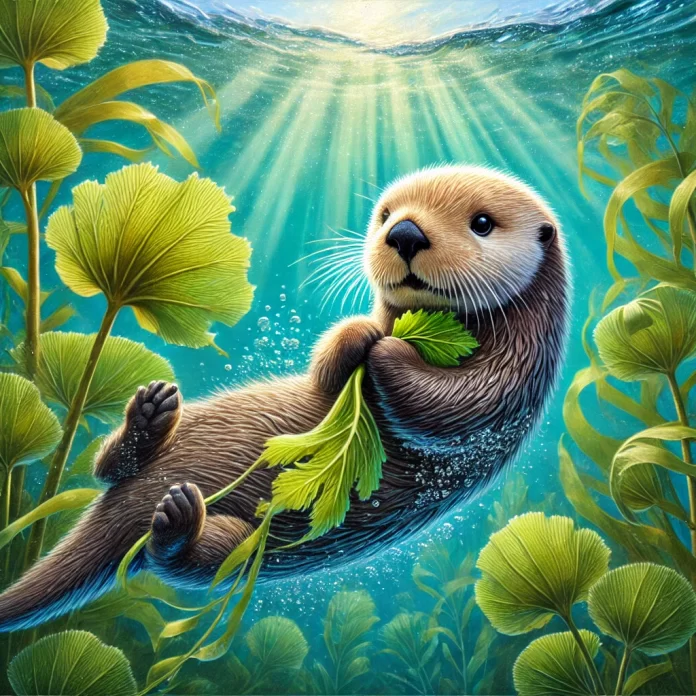Sea Otters: Nature’s Adorable Climate Warriors
When thinking about climate change solutions, most of us imagine technologies like solar panels or vast wind farms. But did you know that one of the cutest animals on the planet, the sea otter, is quietly playing a critical role in the fight against global warming? These furry marine mammals aren’t just charismatic creatures of the ocean—they’re also vital for maintaining healthy kelp forests, which act as powerful carbon sinks.
The Relationship Between Sea Otters and Kelp Forests
Kelp forests are underwater ecosystems formed by large brown algae that grow along coastlines. These forests are some of the most productive ecosystems on Earth, absorbing carbon dioxide (CO₂) from the atmosphere and helping mitigate climate change. But kelp forests face a formidable threat: sea urchins.
Sea urchins feed on the base of kelp plants, often in such large numbers that they decimate entire forests. Without intervention, these spiky creatures can turn vibrant kelp forests into desolate underwater wastelands known as “urchin barrens.” Enter the sea otter.
Sea otters are voracious predators of sea urchins. By keeping sea urchin populations in check, otters ensure that kelp forests remain healthy and thriving. In areas where sea otters are present, scientists have observed significantly higher kelp biomass compared to regions where otters are absent. This increase in kelp allows for greater absorption of atmospheric CO₂, making sea otters unwitting allies in the fight against climate change.
How Much Carbon Do Kelp Forests Store?
Studies suggest that healthy kelp forests can absorb up to 20 times more CO₂ than degraded areas. By maintaining these ecosystems, sea otters indirectly contribute to reducing greenhouse gases. The carbon stored in kelp forests helps combat global warming while also providing habitat for countless marine species.
Challenges to Sea Otter Populations
Unfortunately, sea otters face numerous threats, including habitat destruction, pollution, and climate change itself. Oil spills are particularly devastating to sea otters, as their dense fur, which provides insulation, becomes matted with oil, leading to hypothermia. Conservation efforts are critical to protect these animals and, by extension, the ecosystems they support.
What Can We Do to Help?
- Support Marine Conservation Efforts: Organizations working to protect sea otters and their habitats rely on public support and funding.
- Advocate for Sustainable Practices: Reducing pollution and mitigating climate change through sustainable practices benefits marine ecosystems as a whole.
- Learn and Educate: Sharing knowledge about the interconnectedness of species and ecosystems helps raise awareness of the importance of biodiversity.
A Symbol of Hope
Sea otters remind us that even the smallest players in the natural world can have an outsized impact on global challenges. By protecting these adorable creatures, we also safeguard the kelp forests they depend on, contributing to a healthier planet for all. Next time you see a picture of a sea otter floating serenely in the ocean, remember: they’re not just cute; they’re climate heroes.




